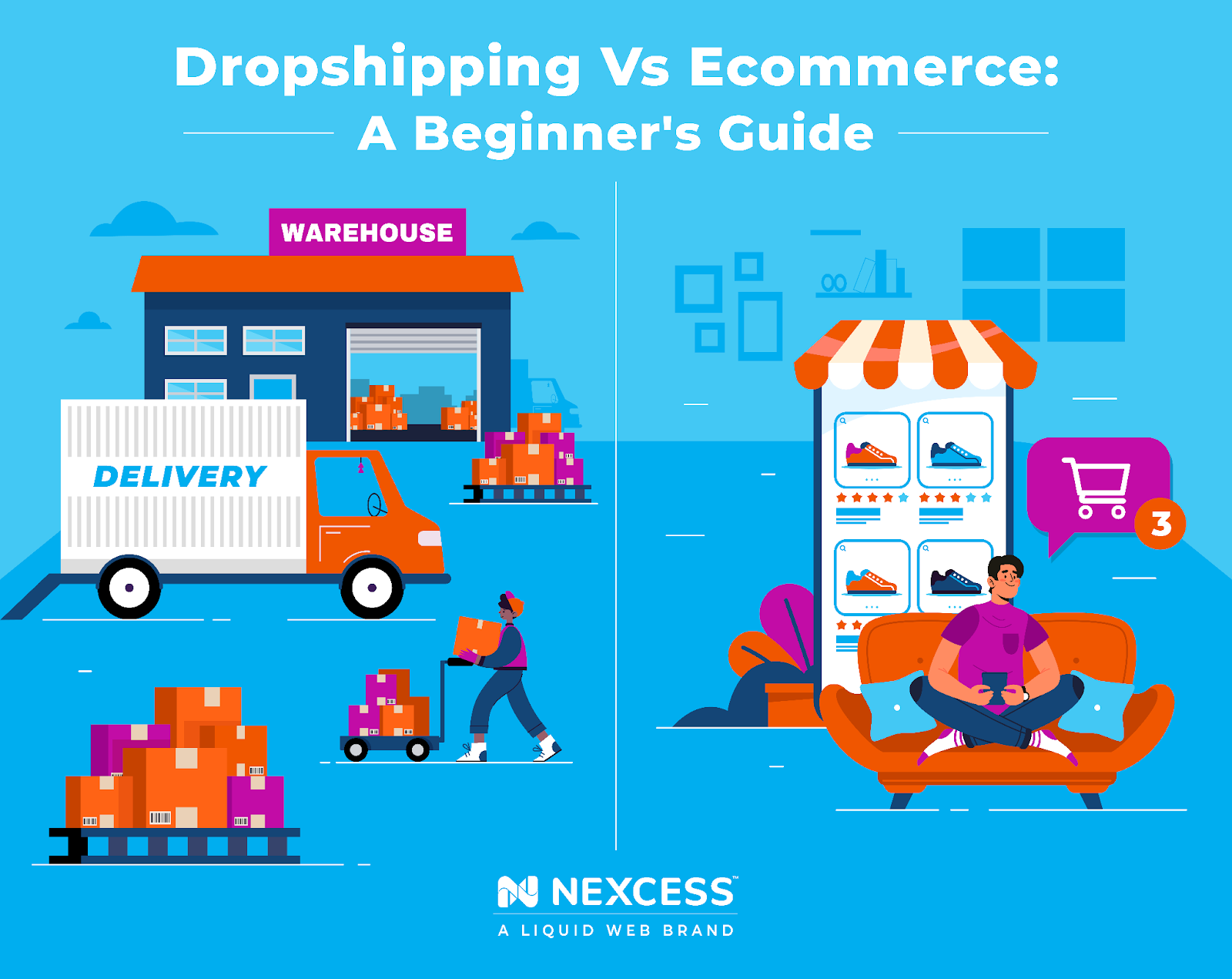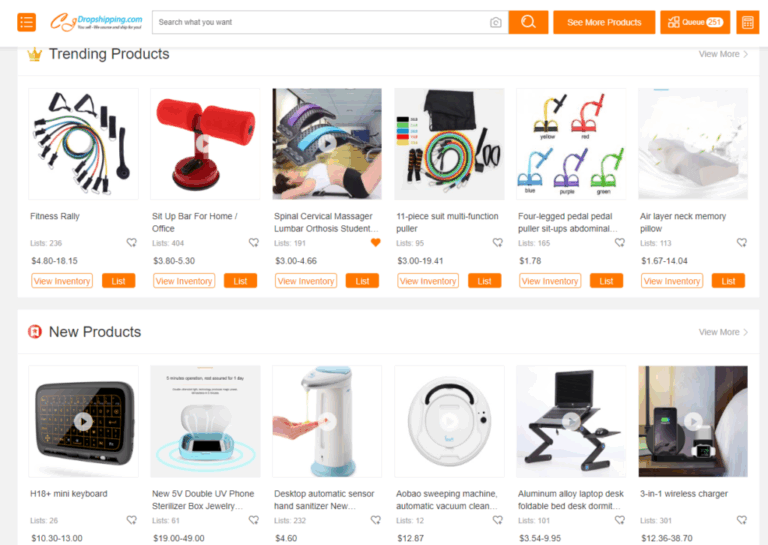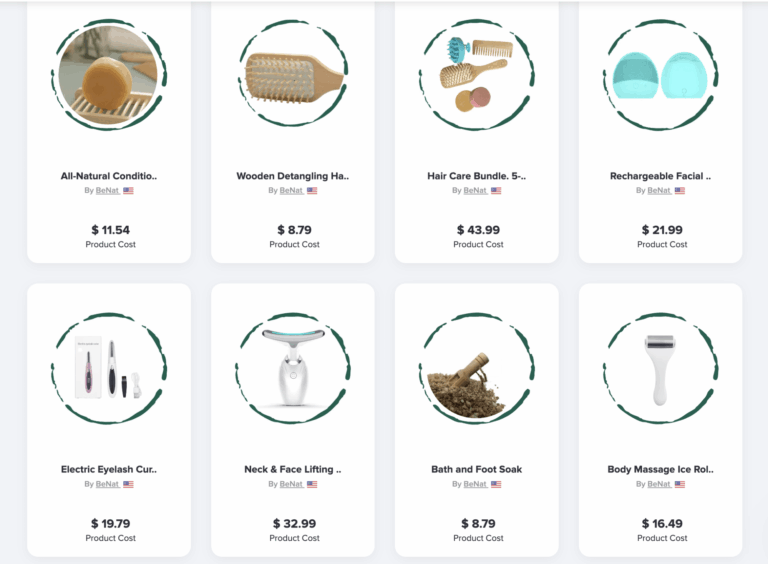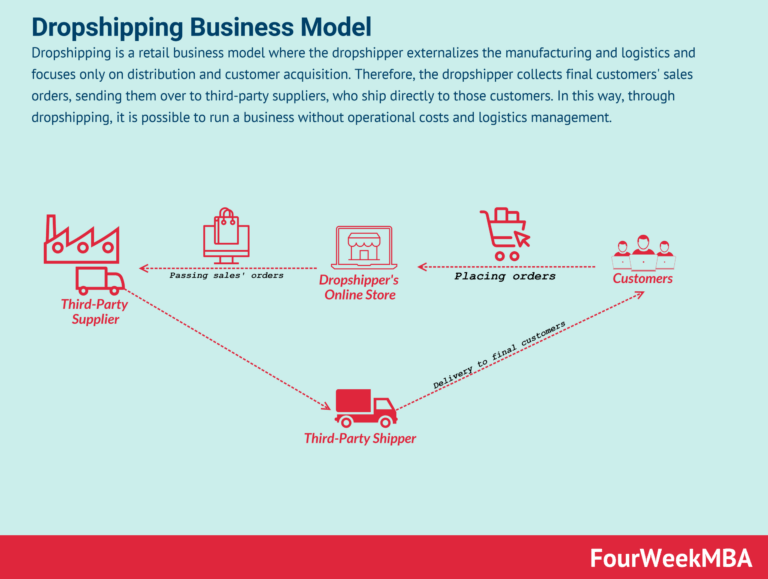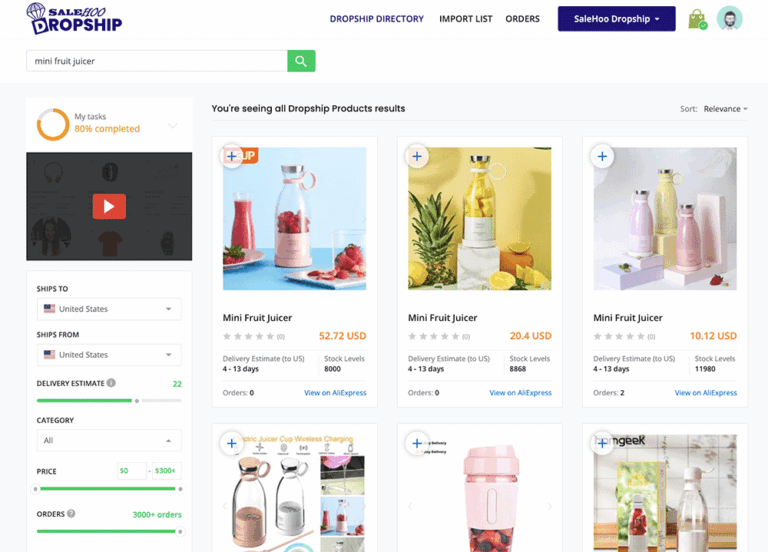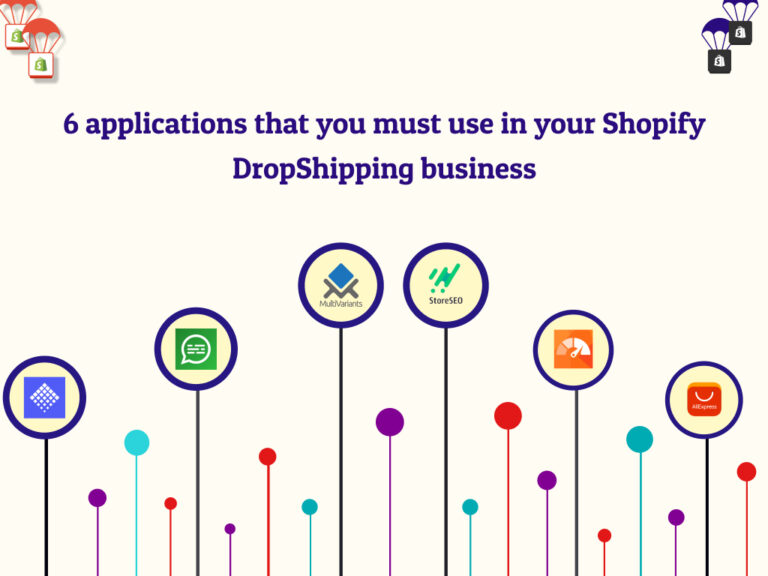How to Start Dropshipping in 2025 (A Beginner’s Guide)
Your Complete Guide to e commerce dropshipping
Welcome to Your Entrepreneurial Journey
Congratulations on taking the first step toward starting your own business! As an aspiring entrepreneur, you are venturing into a world filled with opportunities, creativity, and potential for financial independence. Among the various business models available, dropshipping stands out as one of the most accessible and appealing options for beginners.
So, what exactly is dropshipping? In simple terms, dropshipping is a retail fulfillment method that allows you to sell products without the need to hold inventory. When a customer makes a purchase from your online store, the order is sent directly to a supplier who then ships the product straight to the customer. This model eliminates the need for upfront inventory costs, storage space, and the complexities of shipping logistics—making it an ideal choice for those looking to start a business with minimal investment.
The appeal of dropshipping lies in its low startup costs and flexibility. You can launch your online store from the comfort of your home, working on your terms and schedule. With a laptop and an internet connection, you can tap into a global market and offer a wide range of products. This means you can pivot quickly to meet trends without the financial risk associated with traditional retail.
In this guide, we will provide you with a comprehensive roadmap to navigate the dropshipping landscape. You will learn how to find the right products to sell, identify reliable suppliers, set up your online store, and effectively market your offerings to attract customers. We’ll delve into strategies for optimizing your store and maximizing sales, as well as how to handle customer service and returns effectively. Each step will be clearly outlined, ensuring you have actionable insights to move forward confidently.
As you embark on this entrepreneurial journey, remember that every successful business starts with a dream and the courage to pursue it. With the right knowledge and determination, you can turn your vision into a thriving reality. The world of e-commerce is at your fingertips—let’s get started on building your dropshipping business!
What You’ll Learn In This Guide
- Your Complete Guide to e commerce dropshipping
- How Does Dropshipping Actually Work? A Step-by-Step Breakdown
- The Pros and Cons of Dropshipping: Is It Right for You?
- Step 1: Finding a Profitable Niche and Winning Products
- Step 2: Choosing the Right Dropshipping Suppliers
- Step 3: Building Your Online Store
- Step 4: Marketing Your Dropshipping Business to Get Sales
- Common Mistakes to Avoid as a Beginner
- Frequently Asked Questions (FAQs) about e commerce dropshipping
- Conclusion: Your Next Steps to Launching Your Business
- Important Disclaimer
How Does Dropshipping Actually Work? A Step-by-Step Breakdown
Understanding the Dropshipping Process: A Step-by-Step Guide
Starting a dropshipping business can seem daunting, but breaking it down into manageable steps can simplify the process. Think of yourself as a digital storefront and middleman, connecting customers with products without ever holding inventory. Here’s how the dropshipping model works, step by step:
1. Customer Places an Order on Your Online Store
The journey begins when a customer visits your online store and decides to make a purchase. They browse through your product listings, add items to their cart, and complete the checkout process. At this point, they provide their payment information, and you receive a notification confirming the sale.
2. You Receive the Payment
Once the customer finalizes their order, the payment is processed through your payment gateway (like PayPal or Stripe). This is where the flow of money begins. You’ll typically receive the full amount paid by the customer, minus any transaction fees charged by the payment processor. This initial transaction is crucial, as it funds the next step in the process.
3. You Forward the Order to Your Supplier
After receiving payment, you need to act quickly. You will either manually or automatically forward the order details to your dropshipping supplier. This includes the product information and the customer’s shipping address. If you’re using a dropshipping platform or app, this step is often automated, allowing for a seamless process.
Think of this step as placing an order at a restaurant; you tell the waiter what you want, and they communicate with the kitchen to prepare your meal. Your dropshipping supplier acts as the kitchen, responsible for fulfilling the order.
4. The Supplier Ships the Product Directly to the Customer
Once the supplier receives the order, they package the product and ship it directly to your customer. This is where the magic happens—your customer receives their product without ever knowing about the supplier’s involvement. Many suppliers even offer branded packaging, so the customer sees your business name, enhancing your brand’s visibility.
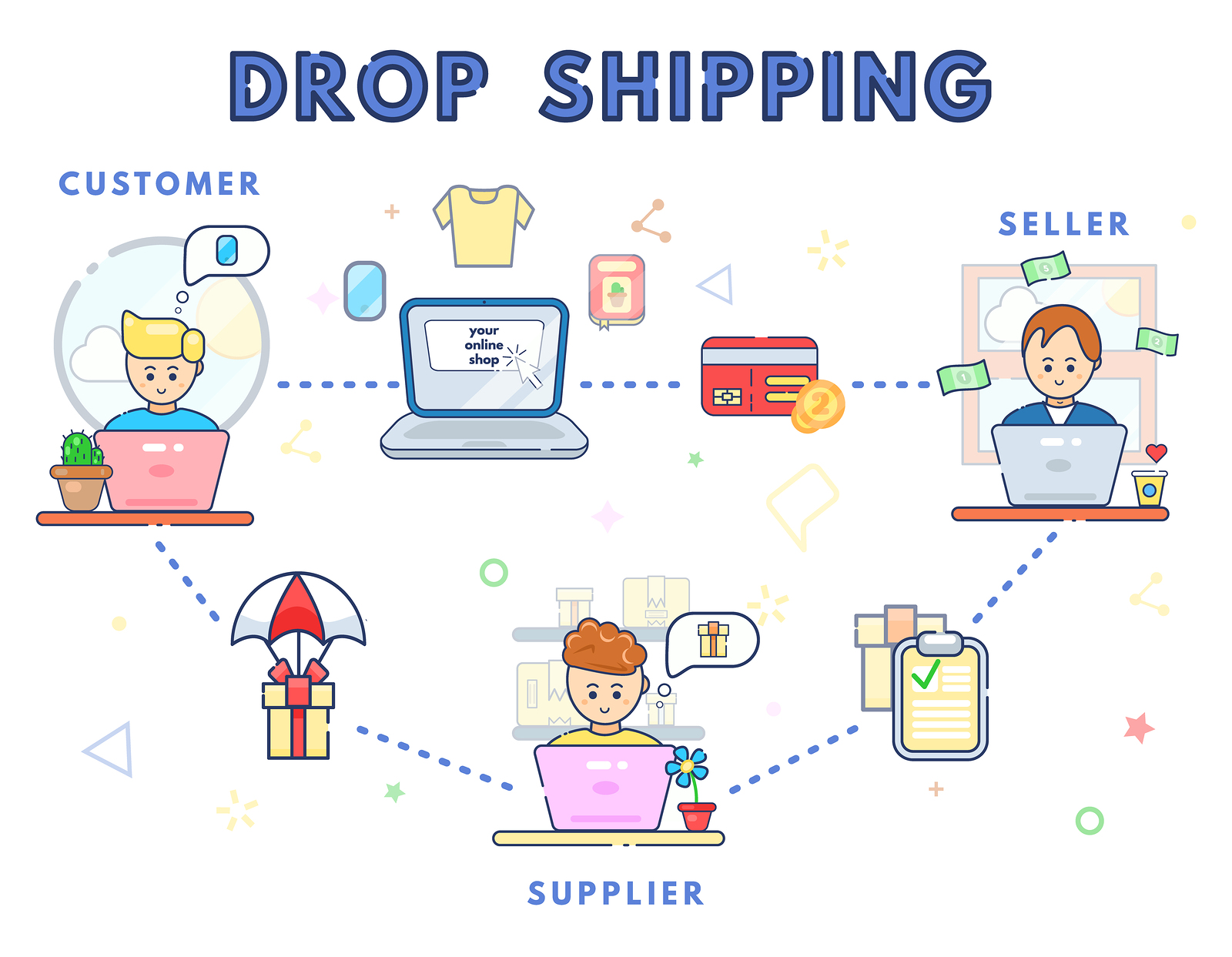
During this step, the flow of goods is complete, and you have officially fulfilled your customer’s order without ever handling the physical product yourself.
The Flow of Money and Goods
Throughout this process, it’s essential to understand how money and goods flow. Here’s a simplified breakdown:
- Money Flow:
- Customer pays you (the retailer).
-
You pay the supplier for the product, which is typically less than what the customer paid you. This difference is your profit margin.
-
Goods Flow:
- The product moves directly from the supplier to the customer, bypassing your hands completely.
Why Dropshipping Works
The dropshipping model is appealing for several reasons:
- Minimal Investment: You don’t need to invest in inventory upfront, making it accessible for entrepreneurs with limited capital.
- Flexibility: You can run your business from anywhere with an internet connection, allowing for a lifestyle that suits you.
- Wide Product Selection: You can offer a diverse range of products without worrying about unsold inventory.
Final Thoughts
By understanding this step-by-step process, you can confidently embark on your dropshipping journey. Remember, your role is to connect customers with products and manage the customer experience. Focus on marketing, driving traffic to your store, and providing excellent customer service, and you’ll be well on your way to building a successful dropshipping business. Keep learning, stay adaptable, and don’t hesitate to seek advice from experienced mentors as you grow!
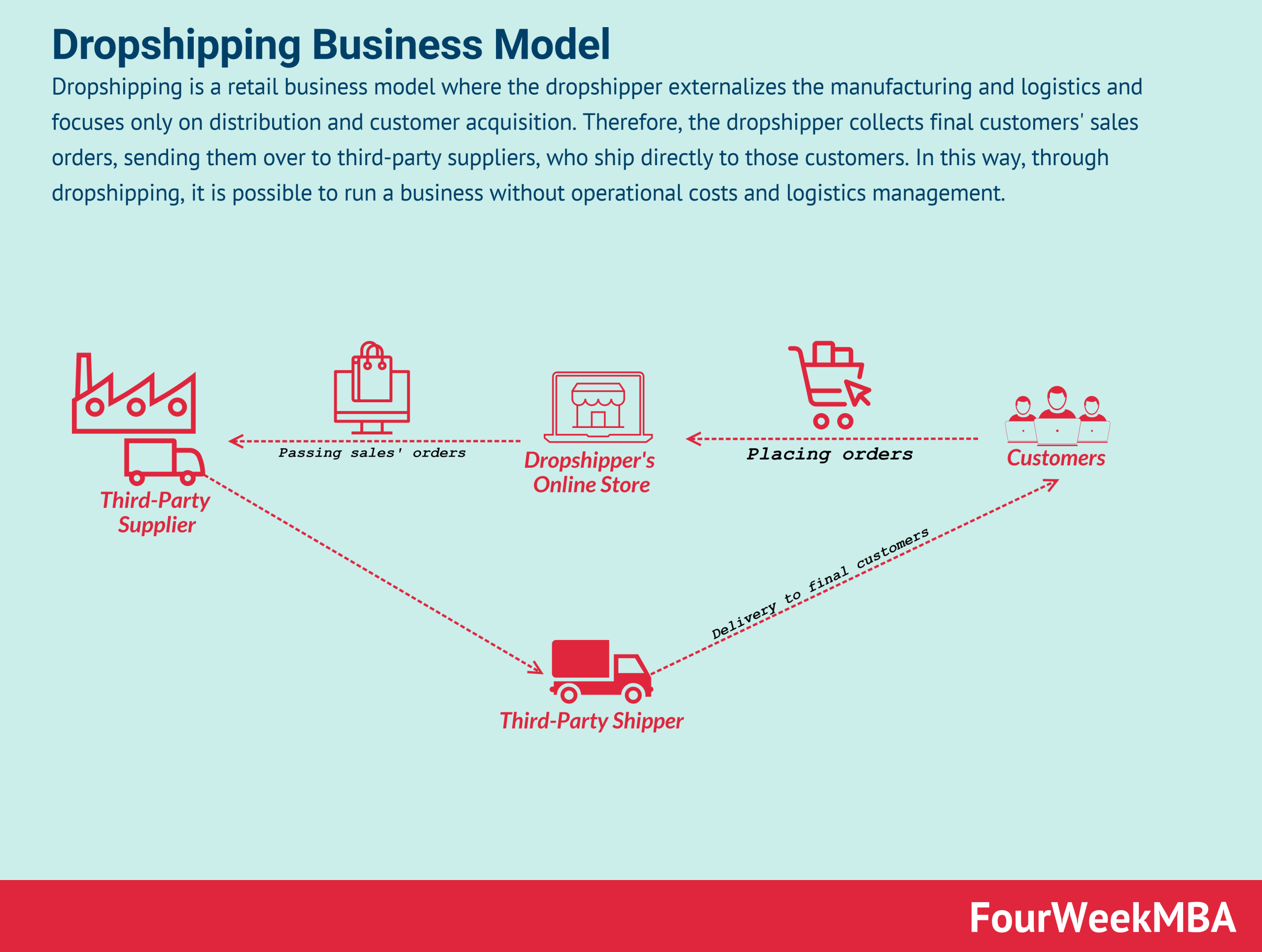
The Pros and Cons of Dropshipping: Is It Right for You?
Advantages and Challenges of Dropshipping
To help you assess whether dropshipping is the right model for your business, here’s a balanced view that outlines its key advantages and challenges:
| Advantages of Dropshipping (Pros) | Challenges of Dropshipping (Cons) |
|---|---|
| Low Financial Risk: No need to invest in inventory upfront reduces financial exposure. | Low Profit Margins: Competition can drive prices down, resulting in thin margins. |
| Wide Product Selection: Ability to offer a diverse range of products without holding stock. | High Competition: The low barrier to entry means many entrepreneurs are vying for the same customers. |
| Flexibility: Operate from anywhere with an internet connection, providing location independence. | Limited Control Over Supply Chain: You rely on suppliers for inventory management, which can affect delivery times and quality. |
| Easy to Start: Setting up an online store is straightforward, requiring minimal technical skills. | Customer Service Challenges: As the seller, you are responsible for addressing customer complaints and issues, even if they arise from supplier mistakes. |
| Scalable: Easily add new products without the need to manage inventory logistics. | Longer Shipping Times: If suppliers are located overseas, shipping can take longer, impacting customer satisfaction. |
| No Product Development Costs: Sell established products without the risk of developing new items. | Marketing Dependency: Success heavily relies on effective marketing strategies to drive traffic and sales. |
| Test New Products Easily: Quickly pivot to new trends without financial commitment to inventory. | Branding Limitations: Difficulty in creating a unique brand experience due to standardized supplier packaging and products. |
Expanding on the Advantages
One of the most compelling reasons to consider dropshipping is the low financial risk involved. Unlike traditional retail models, you don’t need to invest significant capital in inventory before you start selling. This makes it an attractive option for aspiring entrepreneurs who may not have access to large amounts of startup capital. With dropshipping, you can focus on building your brand and marketing your products without the anxiety of unsold stock sitting in a warehouse.
Another significant advantage is the wide product selection available to dropshippers. Since you’re not limited by physical inventory, you can offer a diverse array of products that can quickly adapt to market trends. This flexibility allows you to test various niches and find what resonates with your audience without committing to large quantities of a single item.
The flexibility in location is also a game-changer for many entrepreneurs. With dropshipping, you can run your business from anywhere, whether it’s your home, a co-working space, or while traveling. This location independence means you can design your lifestyle around your business, which is a dream for many aspiring entrepreneurs.
Addressing the Challenges
Despite these advantages, it’s crucial to consider the challenges that come with dropshipping. One of the most pressing concerns is the low profit margins. Due to the high competition in the dropshipping space, many sellers are forced to lower their prices to attract customers, which can significantly cut into profits. It’s essential to find a niche where you can add value, either through superior customer service or unique product offerings, to mitigate this issue.
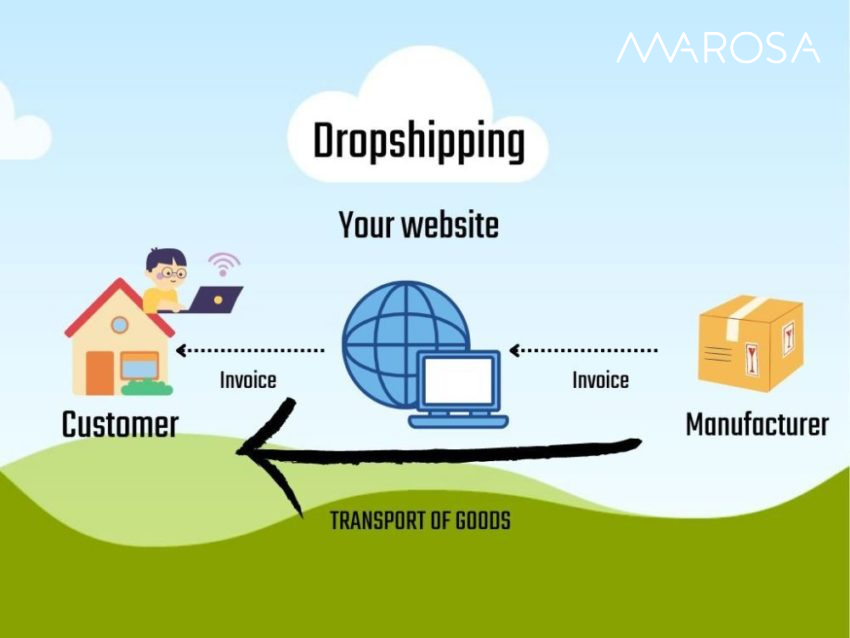
Moreover, the high competition means that simply setting up a dropshipping store isn’t enough. You need to invest time and resources into effective marketing strategies to stand out from the crowd. This often involves learning about SEO, social media marketing, and other digital marketing techniques, which can be overwhelming for beginners.
Another challenge is the limited control over the supply chain. Since you depend on suppliers for inventory management, any issues they face—such as stock shortages or shipping delays—can directly impact your business. This lack of control can lead to customer dissatisfaction, especially if they receive their orders late or if the product quality is not up to par.
Finally, the longer shipping times associated with many dropshipping suppliers, particularly those based overseas, can be a deal-breaker for many customers. In today’s fast-paced e-commerce environment, consumers expect quick delivery. If you can’t meet those expectations, you risk losing customers to competitors who can.
Conclusion
Dropshipping can be a viable business model for aspiring entrepreneurs looking to minimize risk and investment. However, it comes with its own set of challenges that require careful consideration and strategic planning. By weighing the pros and cons, you can determine if this e-commerce model aligns with your goals and capabilities. Remember, success in dropshipping is not just about setting up a store; it’s about navigating the complexities of supply chains, customer service, and competitive marketing to build a sustainable business.
Step 1: Finding a Profitable Niche and Winning Products
What Makes a Good Niche?
Choosing the right niche is crucial for your dropshipping success. A good niche should meet several criteria:
-
Interest and Passion: Ideally, you should choose a niche that you are genuinely interested in. Passion for your products will not only keep you motivated but also help you connect with your target audience.
-
Market Demand: Your niche should have a proven demand. Use tools like Google Trends, keyword research tools (like Ahrefs or SEMrush), and social media platforms to gauge interest and search volume.
-
Profitability: Look for niches that allow for healthy profit margins. Ideally, you want products that can be sold at a markup of at least 30-50% above your supplier’s cost.
-
Competition Analysis: While some competition is good (it indicates a demand), too much competition can make it difficult to stand out. Use tools like Jungle Scout or SimilarWeb to analyze competitors in your niche.
-
Target Audience: Understand who your ideal customers are. A well-defined target audience can help you tailor your marketing strategies effectively.
-
Trends and Longevity: Aim for niches that are not just fleeting trends but have the potential for long-term growth. Seasonal products can be risky if they don’t sell well during off-seasons.
How to Brainstorm Niche Ideas
Brainstorming niche ideas is a creative process that can be structured for better results. Here are some actionable steps:
-
Identify Your Interests and Skills: Start by listing your hobbies, interests, and areas of expertise. This list will provide a solid foundation for potential niches.
-
Market Research: Explore marketplaces like Amazon, eBay, and Etsy to see what products are trending. Look for categories with high sales but lower competition.
-
Use Online Tools: Leverage tools like Google Trends to see what topics are gaining interest over time. BuzzSumo can help you find popular content in various niches, indicating what people are currently engaged with.
-
Social Media Insights: Platforms like Instagram, Pinterest, and TikTok can provide insights into trending products and niches. Look for hashtags related to your interests to see what’s currently popular.
-
Survey Potential Customers: Use social media or forums (like Reddit) to ask potential customers about their interests and pain points. This can reveal gaps in the market.
-
Competitor Analysis: Research successful dropshipping stores in your potential niches. Analyze their product offerings, customer engagement, and marketing strategies.
Validating Your Niche
Once you’ve brainstormed potential niches, it’s time to validate them to ensure they are viable. Here are some effective methods:
-
Keyword Research: Use keyword research tools to find search volume and competition levels for your niche keywords. High search volume with low competition is ideal.
-
Competitive Analysis: Analyze competitors in your chosen niche. Look for their best-selling products, customer reviews, and social media engagement to gauge market demand.
-
Test with Minimal Investment: Consider running small ad campaigns (e.g., Facebook or Instagram ads) to see how your audience responds to your niche products. This can provide real-time feedback.
-
Join Online Communities: Participate in forums or social media groups related to your niche. Engage with potential customers to understand their needs and interests better.
-
Create a Landing Page: Build a simple landing page showcasing your niche products and run targeted ads to it. Monitor the traffic and conversion rates to assess interest.
-
Evaluate Supplier Availability: Ensure there are reliable suppliers who can fulfill orders in your chosen niche. Use platforms like AliExpress, SaleHoo, or Oberlo to find potential suppliers.
Methods for Finding Winning Products
Finding winning products is a critical aspect of your dropshipping business. Here are effective methods and criteria to help you identify them:
-
Supplier Marketplaces: Explore platforms like AliExpress, Alibaba, or Oberlo to discover trending products. Look for items with high sales volume and positive reviews.
-
Social Media Trends: Use social media tools to track trending products. Platforms like TikTok and Instagram often showcase viral products that can be lucrative for dropshipping.
-
Product Research Tools: Utilize tools like Jungle Scout, Helium 10, or Viral Launch to analyze product performance on Amazon. These tools can help you identify profitable items based on sales data.
-
Criteria for a Good Dropshipping Product:
- Price Point: Aim for products priced between $15 and $200. This range often allows for good margins while remaining accessible to customers.
- Not Easily Found in Stores: Products that are unique or not available in local retail stores can attract more customers.
- Problem-Solving: Items that solve a specific problem or fulfill a need tend to perform better. Think about daily inconveniences that your product can address.
- Lightweight and Durable: Products that are easy to ship and not prone to damage during transit reduce logistical challenges.
-
Seasonal vs. Evergreen: Consider the longevity of the product. Evergreen products that sell year-round are often safer bets than seasonal items.
-
Customer Feedback: Pay attention to customer reviews on platforms like Amazon or AliExpress. Look for products with a high number of positive reviews and minimal complaints.
-
Influencer Collaborations: Partnering with influencers in your niche can help you identify winning products. Influencers often have their finger on the pulse of trending items and can provide valuable insights.
Conclusion
Finding a profitable niche and winning products is a foundational step in your dropshipping journey. By combining your interests with thorough market research, validation, and strategic product selection, you can set yourself up for success. Remember, persistence is key. The more time and effort you invest in understanding your niche and products, the better positioned you will be to create a thriving online business. Happy dropshipping!
Step 2: Choosing the Right Dropshipping Suppliers
Understanding Dropshipping Suppliers
Finding the right dropshipping supplier is crucial for the success of your online business. A reliable supplier not only provides quality products but also ensures that your customers receive their orders on time and in good condition. In this section, we will explore some popular platforms for dropshipping suppliers, evaluate their pros and cons, and offer you a checklist to help you identify the best supplier for your needs.
AliExpress
AliExpress is one of the most well-known dropshipping platforms, connecting sellers to suppliers primarily based in China. It offers a vast selection of products across numerous categories, making it a go-to for many aspiring dropshippers.
Pros:
- Wide Product Range: AliExpress hosts millions of products, allowing you to explore numerous niches without the need for inventory.
- Low Prices: Due to the competitive nature of the platform, you can often find products at lower prices, maximizing your potential profit margins.
- No Upfront Costs: You only pay for the product after a customer places an order, which means there’s no financial risk involved in holding inventory.
- User-Friendly Interface: The platform is easy to navigate, making it simple to find products and suppliers.
Cons:
- Long Shipping Times: Many suppliers are based in China, which can result in extended shipping times, potentially leading to customer dissatisfaction.
- Variable Product Quality: With a wide array of suppliers, product quality can vary significantly. You’ll need to order samples to ensure quality before selling.
- Limited Customer Support: As a dropshipper, you may face challenges with customer service if issues arise, as you are often reliant on the supplier’s responsiveness.
CJ Dropshipping
CJ Dropshipping is another popular platform that has gained traction among dropshippers. It provides a comprehensive solution, from product sourcing to order fulfillment, and even offers warehousing services in various locations.
Pros:
- Fast Shipping Options: CJ Dropshipping has warehouses in several countries, including the USA, which can reduce shipping times significantly.
- Quality Control: The platform allows you to order samples and inspect the quality of products before listing them in your store.
- Integrated Tools: CJ provides tools for inventory management, product listing, and order processing, which streamline your operations.
- Custom Branding Options: You can customize packaging and invoices, enhancing your brand presence.
Cons:
- Limited Product Range: While CJ has a good selection of products, it may not be as extensive as AliExpress.
- Higher Costs: The convenience of faster shipping and quality control may come at a slightly higher price point.
- Learning Curve: The platform may be more complex than AliExpress, requiring a bit of time to familiarize yourself with its features.
USA-Based Suppliers
Working with USA-based suppliers can be a game-changer for your dropshipping business. These suppliers offer faster shipping times and often provide higher-quality products, making them an attractive option.
Pros:
- Fast Shipping: Domestic shipping typically takes 3-5 days, which can enhance customer satisfaction and reduce returns.
- Better Customer Service: You are likely to encounter fewer communication barriers and time zone issues when dealing with suppliers in your own country.
- Higher Product Quality: Many USA-based suppliers focus on quality, which can lead to a better customer experience.
- Easier Return Processes: Handling returns can be simpler with domestic suppliers, as you won’t have to navigate international shipping.
Cons:
- Higher Prices: USA-based suppliers often charge more for their products, which can impact your profit margins.
- Limited Product Variety: The range of products may be smaller compared to global platforms like AliExpress.
- Smaller Supplier Pool: Depending on your niche, finding reputable suppliers might take more effort.
What to Look for in a Good Supplier
When selecting a dropshipping supplier, consider the following checklist to ensure you’re making a wise choice:
- Communication: Assess the supplier’s responsiveness. Quick and clear communication is essential for resolving issues efficiently.
- Shipping Times: Evaluate the average shipping times offered by the supplier. Faster shipping can enhance customer satisfaction.
- Product Quality: Order samples to check the quality of the products. This step is crucial in maintaining your store’s reputation.
- Return Policies: Understand the supplier’s return and refund policies. Clear policies can save you and your customers from potential headaches.
- Inventory Management: Confirm that the supplier can manage inventory effectively to prevent stockouts or overselling.
- Branding Options: If branding is important to you, check if the supplier offers custom packaging or branding services.
- Reviews and Ratings: Look for reviews from other dropshippers to gauge the supplier’s reliability and product quality.
- Payment Terms: Understand the payment methods and terms offered by the supplier to avoid any surprises.
Conclusion
Choosing the right dropshipping supplier is a critical step in building a successful online business. By carefully evaluating platforms like AliExpress, CJ Dropshipping, and USA-based suppliers, you can find a partner that aligns with your business goals. Remember to use the checklist provided to make informed decisions and set your store up for success. As you embark on this journey, stay proactive, adapt to changes, and continuously seek ways to improve your supplier relationships. Good luck!
Step 3: Building Your Online Store
Setting Up Your Online Store for Dropshipping
Creating an online store is one of the most exciting steps in your dropshipping journey. With platforms like Shopify, setting up your store is straightforward and user-friendly, even for beginners. In this section, we’ll guide you through the essential steps to get your Shopify store up and running, ensuring you’re well-prepared to start selling.
1. Choosing a Plan
Before you can dive into building your store, you need to select a suitable Shopify plan. Shopify offers several pricing tiers, each with varying features:
- Basic Shopify: Ideal for beginners, this plan provides essential features, including an online store, unlimited products, and 24/7 support. It’s a great starting point if you’re just testing the waters.
- Shopify: This plan includes everything in Basic, plus additional features like professional reports and gift cards. Consider this if you’re looking to scale your business.
- Advanced Shopify: This plan is for established businesses needing advanced reporting and lower credit card rates.
You can start with the 14-day free trial to explore the platform before committing to a paid plan. Take your time to evaluate which plan aligns with your business goals.
2. Picking a Theme
Once you’ve chosen your plan, it’s time to select a theme for your store. Your theme is crucial as it affects the look and feel of your online shop. Shopify offers a variety of free and paid themes that cater to different niches.
- Free Themes: These are a great starting point. Look for themes that are responsive (mobile-friendly) and customizable. Popular free themes include “Debut” and “Brooklyn.”
- Paid Themes: If you want something unique or specific to your niche, consider investing in a paid theme. They often come with more features and customization options.
When choosing a theme, keep your target audience in mind. The design should resonate with your customers and reflect your brand identity.
3. Setting Up Essential Pages
To establish credibility and provide necessary information to your customers, set up essential pages on your store:
- About Us: Share your story, mission, and values. This helps build a connection with your customers.
- Contact Us: Make it easy for customers to reach you. Include an email address, phone number, and, if possible, a contact form.
- Policies: Clearly outline your store policies, including:
- Shipping Policy: Specify shipping times, costs, and methods.
- Return Policy: Detail how customers can return products, the time frame, and any conditions.
- Privacy Policy: Inform customers how their data is handled and protected.
These pages not only enhance trust but also comply with e-commerce regulations.
4. Installing Key Apps
Shopify’s App Store is a treasure trove of tools that can enhance your dropshipping business. Here are some essential apps to consider:
- Import Tools: Apps like DSers or CJ Dropshipping allow you to import products directly from suppliers to your store. These tools automate the process of syncing product details and inventory levels, making it easier to manage your offerings.
- Order Fulfillment: Ensure you have an app that handles order fulfillment seamlessly. Many suppliers provide their own apps, but you can also explore options like Oberlo or Spocket.
- Marketing Tools: Consider apps that assist with email marketing (like Klaviyo) or social media integration (like Facebook Shop).
Choose apps that align with your business needs and help streamline your operations.
5. Setting Up Payment Gateways
To start accepting payments, you need to set up payment gateways. Shopify supports various payment processors, including:
- Shopify Payments: This is the easiest option to set up and allows you to accept credit card payments directly.
- PayPal: An essential addition, as many customers prefer using PayPal for online transactions.
- Third-Party Payment Providers: If you have specific needs or want to use a different processor, Shopify supports other options like Stripe, Authorize.net, and more.
To set up payment gateways, navigate to your Shopify admin panel, click on “Settings,” then “Payments,” and follow the prompts to connect your preferred payment methods.
Alternative: WooCommerce
While Shopify is an excellent choice for beginners, you might also consider WooCommerce if you prefer more control over your store. WooCommerce is a plugin for WordPress that allows for extensive customization. It’s ideal for those with some technical knowledge who want to build a more personalized e-commerce experience. However, keep in mind that it may require a steeper learning curve compared to Shopify.
Conclusion
Building your online store is a crucial step in your dropshipping journey, and with Shopify, it’s both accessible and efficient. By following these steps—choosing a plan, selecting a theme, setting up essential pages, installing key apps, and configuring payment gateways—you’ll be well on your way to launching your e-commerce business. Remember, every successful entrepreneur started where you are now. Keep learning, stay adaptable, and watch your store grow!
Step 4: Marketing Your Dropshipping Business to Get Sales
Social Media Marketing (TikTok & Instagram)
Social media platforms are an invaluable resource for marketing your dropshipping business. They allow you to engage directly with potential customers and showcase your products in a visually appealing way. Here are some actionable strategies to leverage TikTok and Instagram effectively:
1. Create Engaging Content
- Product Demos: Showcase your products in action. For instance, if you’re selling kitchen gadgets, create short videos demonstrating their use. This not only informs but also entices viewers to make a purchase.
- User-Generated Content: Encourage your customers to share photos or videos of your products in use. Repost this content on your profile to build community and trust. For example, if you sell fitness gear, ask customers to tag you in their workout posts.
2. Utilize Influencer Partnerships
- Micro-Influencers: Collaborate with influencers who have a following of 1,000 to 10,000. They often have higher engagement rates and can promote your products authentically. Reach out to fitness or lifestyle micro-influencers in your niche and offer them free products in exchange for a review.
- Affiliate Programs: Create an affiliate program where influencers earn a commission on sales they generate. This incentivizes them to promote your store actively.
3. Leverage Instagram Shopping
- Set Up Instagram Shop: Make it easy for users to shop directly from your posts. Tag your products in photos, allowing users to click through and purchase without leaving the app.
- Highlight Sales and Promotions: Use Instagram Stories to announce flash sales or special promotions. Make use of countdown stickers to create urgency.
4. Engage with Your Audience
- Polls and Q&A: Use features like polls and Q&A in Instagram Stories to engage your audience. Ask what products they’d like to see next or get feedback on new designs.
- Live Sessions: Host live sessions to showcase new arrivals, provide product tutorials, or answer customer questions in real-time. This builds rapport and trust with your audience.
Paid Advertising (Facebook/Instagram Ads)
Paid advertising is a powerful tool to reach a broader audience and drive targeted traffic to your dropshipping store. Here’s how to get started effectively:
1. Define Your Target Audience
- Utilize Facebook Audience Insights: Take advantage of the Audience Insights tool to learn about your potential customers’ demographics, interests, and behaviors. Tailor your ads to target these segments specifically.
- Custom Audiences: Create custom audiences based on past website visitors or email subscribers. This allows you to retarget users who have already shown interest in your products.
2. Optimize Your Ad Creatives
- High-Quality Images and Videos: Use eye-catching visuals that showcase your products. For example, if you sell home decor, include images that depict your items styled in real-life settings.
- Compelling Ad Copy: Write clear, persuasive copy that highlights the benefits of your products. Use a strong call-to-action (CTA) like “Shop Now” or “Limited Time Offer” to encourage clicks.
3. A/B Testing
- Test Different Variations: Create multiple ad variations to see which performs best. Experiment with different headlines, images, and CTAs to optimize for the best results.
- Monitor Performance: Use Facebook Ads Manager to track ad performance regularly. Look at metrics like click-through rates (CTR) and conversion rates to refine your strategy.
4. Set a Budget and Schedule
- Start Small: If you’re new to paid advertising, start with a small daily budget to test the waters. As you identify successful ads, gradually increase your budget.
- Timing is Key: Analyze when your audience is most active and schedule your ads accordingly. For example, if your target demographic is young adults, consider running ads in the evenings or weekends.
Search Engine Optimization (SEO)
Optimizing your dropshipping store for search engines is crucial for driving organic traffic. Here are some fundamental strategies to implement:
1. Keyword Research
- Identify Target Keywords: Use tools like Google Keyword Planner or Ubersuggest to find relevant keywords in your niche. Focus on long-tail keywords (e.g., “eco-friendly yoga mats”) as they have less competition and higher conversion rates.
- Analyze Competitors: Look at what keywords your competitors are ranking for and incorporate similar terms into your content.
2. Optimize Product Pages
- Unique Product Descriptions: Write compelling, unique descriptions for each product, incorporating your target keywords naturally. Avoid copying supplier descriptions, as this can harm your SEO.
- Use Alt Tags for Images: Make sure to include alt tags for all product images. This not only helps with SEO but also improves accessibility for users.
3. Create Quality Content
- Blogging: Start a blog on your store’s website that provides valuable content related to your products. For instance, if you sell gardening tools, write articles about gardening tips or plant care. This can help drive traffic and establish your brand as an authority.
- FAQs Section: Include a frequently asked questions section on your site. This can help answer common customer queries while improving SEO through targeted keywords.
4. Build Backlinks
- Guest Blogging: Write guest posts for popular blogs in your niche, including links back to your store. This not only drives traffic but also improves your site’s authority.
- Engage with Online Communities: Participate in forums and social media groups related to your niche. Provide helpful answers and link back to your store when relevant.
Email Marketing
Email marketing remains one of the most effective channels for driving sales and building customer loyalty. Here’s how to make the most of it:
1. Build Your Email List
- Lead Magnets: Offer a freebie, such as an eBook or discount code, in exchange for email sign-ups. This incentivizes visitors to join your list.
- Exit-Intent Popups: Use exit-intent popups to capture visitors who are about to leave your site. Offer them a discount or free shipping if they sign up for your newsletter.
2. Segment Your Audience
- Targeted Campaigns: Segment your email list based on customer behavior, such as past purchases or browsing history. This allows you to send personalized recommendations and promotions.
- Re-engagement Campaigns: Identify inactive subscribers and send them a targeted email campaign to encourage them to return. Offer a special discount or highlight new products they may like.
3. Craft Compelling Content
- Product Launch Announcements: Use email to announce new products or collections. Include high-quality images and compelling descriptions to generate excitement.
- Abandoned Cart Emails: Set up automated emails to remind customers who left items in their cart. Include a small discount or free shipping to encourage them to complete their purchase.
4. Analyze and Optimize
- Track Performance Metrics: Monitor open rates, click-through rates (CTR), and conversion rates to understand the effectiveness of your campaigns. Tools like Mailchimp or Klaviyo can help with this.
- A/B Testing: Experiment with different subject lines, content formats, and sending times to see what resonates best with your audience.
Conclusion
Marketing your dropshipping business effectively requires a blend of creativity, strategic planning, and constant refinement. By leveraging social media, paid ads, SEO, and email marketing, you can build a strong online presence and drive sales. Remember, the key is to stay engaged with your audience, test different strategies, and adapt based on what works best for your unique business. With dedication and the right approach, you can turn your dropshipping venture into a thriving online business.
Common Mistakes to Avoid as a Beginner
1. Choosing a Bad Niche
Mistake: Many beginners rush into dropshipping without thoroughly researching their niche. They may select overly saturated markets or those that lack consumer interest, leading to poor sales.
Solution: Take the time to conduct comprehensive market research. Use tools like Google Trends, social media, and keyword research to identify trending products and niches with potential. Focus on areas that align with your interests and expertise; this will make your marketing efforts more authentic and enjoyable.
2. Not Testing Products
Mistake: Beginners often launch their stores with a wide range of products without testing their market viability. This can lead to significant inventory and marketing costs for items that don’t sell.
Solution: Start with a small selection of products. Order samples to evaluate quality and shipping times. Use these products to create promotional content and gauge customer interest. This approach minimizes risk and allows you to refine your offerings based on real-world feedback.
3. Poor Customer Service
Mistake: Many new dropshippers underestimate the importance of customer service. They may neglect inquiries or fail to manage expectations regarding order fulfillment, leading to dissatisfied customers.
Solution: Establish a clear customer service strategy from the start. Make sure to respond promptly to inquiries and provide clear information about shipping times and return policies. Consider using automated tools for FAQ responses and manage customer expectations by communicating potential delays transparently.
4. Ignoring Shipping Times
Mistake: Beginners often overlook shipping times, especially when sourcing products from overseas suppliers. This can result in frustrated customers who expect quick deliveries.
Solution: Be transparent about shipping times on your website. If you’re working with suppliers that ship internationally, consider sourcing products from domestic suppliers to reduce delivery times. Always communicate with your customers about their order status and set realistic expectations to enhance their experience.
5. Unrealistic Profit Expectations
Mistake: New entrepreneurs often have inflated expectations about profitability, assuming that dropshipping will yield high profits without understanding the costs involved.
Solution: Create a detailed financial plan that includes all potential expenses, such as product costs, shipping fees, marketing, and platform fees. Understand your profit margins and set realistic goals based on industry standards. This will help you to build a sustainable business model rather than chasing unrealistic profits.
6. Neglecting Marketing Efforts
Mistake: Some beginners believe that simply setting up an online store will lead to sales. They neglect the crucial aspect of marketing, which is essential for driving traffic and conversions.
Solution: Develop a robust marketing strategy that includes search engine optimization (SEO), social media marketing, and possibly paid advertising. Experiment with various channels to find what works best for your target audience. Consider creating engaging content, such as blog posts or videos, to build brand awareness and attract potential customers.
7. Not Building an Email List
Mistake: Many beginners fail to capture customer emails, missing out on a valuable marketing tool for future sales and promotions.
Solution: Implement email capture forms on your website, offering incentives like discounts for first-time buyers. Use email marketing platforms to nurture these leads with updates, promotions, and personalized offers. This will help build a loyal customer base and drive repeat sales.
8. Overlooking Product Quality
Mistake: In the rush to launch, beginners may choose suppliers without verifying product quality. This can lead to returns, negative reviews, and a damaged reputation.
Solution: Always vet your suppliers. Order samples to assess product quality before listing them on your store. Research supplier reviews and feedback from other dropshippers to ensure you’re partnering with reliable vendors who prioritize quality.
9. Ignoring Analytics
Mistake: Beginners often overlook the importance of tracking their store’s performance. Without analytics, it’s challenging to understand customer behavior and make informed decisions.
Solution: Utilize analytics tools available on your e-commerce platform to monitor key performance indicators (KPIs) such as traffic, conversion rates, and customer demographics. Regularly review this data to identify trends and areas for improvement, allowing you to make data-driven decisions to optimize your business.
10. Failing to Adapt
Mistake: The e-commerce landscape is constantly evolving, and beginners may stick rigidly to their initial plans, ignoring changes in market demand or consumer behavior.
Solution: Stay informed about industry trends and be willing to adapt your strategies accordingly. Engage with your audience through surveys and feedback to understand their needs better. This flexibility will help you remain competitive and responsive to market changes, ensuring long-term success in your dropshipping venture.
Frequently Asked Questions (FAQs) about e commerce dropshipping
1. What is dropshipping?
Dropshipping is a retail fulfillment method where you sell products without holding any inventory. When a customer places an order on your online store, you forward the order details to a supplier, who then ships the product directly to the customer. This model allows you to focus on marketing and customer service, while the supplier handles storage, packaging, and shipping.
2. How does the dropshipping process work?
The dropshipping process consists of several steps:
1. Choose a dropshipping supplier: Partner with a supplier that offers products you want to sell.
2. Set up your online store: Create a storefront that lists your products at prices you determine.
3. Receive orders: When a customer orders a product, they pay you directly.
4. Forward the order: Send the order details to your supplier.
5. Supplier ships the product: The supplier packages and ships the product directly to your customer.
6. Customer service: You handle customer inquiries and support, maintaining the relationship.
3. How much money do I need to start dropshipping?
One of the main advantages of dropshipping is its low startup cost. You can start with as little as $100 to $500. This budget typically covers setting up an online store (using platforms like Shopify), marketing, and possibly initial fees for dropshipping apps or suppliers. However, keep in mind that investing in quality marketing will significantly impact your success.
4. Do I need to register a company to start dropshipping?
While it’s not strictly necessary to register a company to start dropshipping, it’s highly advisable. Registering as a business can provide you with legal protections, make tax processes easier, and enhance your credibility with customers and suppliers. The exact requirements depend on your location, so check local regulations to ensure compliance.
5. How do I handle returns and refunds?
As the seller of record, you are responsible for managing returns and refunds. Establish a clear return policy on your website that outlines the process for customers. Communicate with your dropshipping supplier to understand their return policies, as this will help you handle customer requests smoothly. Make sure to address customer inquiries promptly to maintain trust.
6. What are the main challenges of dropshipping?
Dropshipping has its challenges, including:
– Lower profit margins: Since you don’t purchase in bulk, your per-unit costs may be higher.
– Limited control: You rely on suppliers for product quality and shipping times, which can impact customer satisfaction.
– Inventory issues: Stock levels can change rapidly with suppliers, leading to potential product unavailability.
– Shipping complexities: If you work with multiple suppliers, managing shipping costs and times can become complicated.
7. How do I find reliable dropshipping suppliers?
Finding reliable suppliers is crucial for your dropshipping success. Here are some steps to consider:
– Research directories: Use platforms like AliExpress, SaleHoo, or Oberlo to find vetted suppliers.
– Order samples: Test products to ensure quality and shipping speed.
– Check reviews: Look for feedback from other sellers to gauge supplier reliability.
– Communicate: Reach out to potential suppliers to assess their responsiveness and willingness to work with you.
8. Can I sell branded products through dropshipping?
Yes, you can sell branded products through dropshipping, but it’s essential to ensure you have permission from the brand to avoid legal issues. Alternatively, consider private label dropshipping, where you can create your own brand using products from suppliers. This can help differentiate your store and increase customer loyalty.
9. How do I market my dropshipping store?
Effective marketing is vital for driving traffic to your dropshipping store. Here are some strategies:
– Social media marketing: Utilize platforms like Instagram, Facebook, and TikTok to showcase your products and engage with customers.
– Search engine optimization (SEO): Optimize your website and product descriptions to rank higher in search results.
– Content marketing: Create blog posts or videos that provide value and attract potential customers to your store.
– Email marketing: Build an email list and send newsletters to keep customers informed about promotions and new products.
10. Is dropshipping a sustainable business model?
Dropshipping can be a sustainable business model if you approach it strategically. Focus on building strong relationships with reliable suppliers, maintaining excellent customer service, and continually optimizing your marketing efforts. While it may not be as profitable as traditional retail in the long run, it offers a flexible and low-risk way to enter the e-commerce space, making it ideal for beginners and aspiring entrepreneurs.
Conclusion: Your Next Steps to Launching Your Business
Your Path to Launching a Successful Dropshipping Business
Starting your dropshipping business is an exciting venture that can lead to financial independence and creative freedom. However, it’s essential to approach it with the right mindset and dedication. Here’s a clear roadmap to help you take those crucial first steps:
-
Research and Choose Your Niche: Identify a market that interests you. Look for trending products with high demand and low competition. Conduct thorough market research to understand your target audience and what they are looking for.
-
Select Reliable Suppliers: Partner with reputable dropshipping suppliers who offer quality products, competitive pricing, and efficient shipping. Platforms like AliExpress, Printful, or Collective can connect you with vetted suppliers.
-
Set Up Your Online Store: Create an appealing online store using platforms like Shopify or WooCommerce. Ensure your website is user-friendly, mobile-optimized, and visually attractive. Use dropshipping apps to streamline order processing and inventory management.
-
Develop a Marketing Strategy: Focus on driving traffic to your store through effective marketing techniques. Leverage social media, SEO, and content marketing to attract potential customers. Remember, your success hinges on your ability to market your products effectively.
-
Manage Customer Relationships: As the seller of record, you’ll be the point of contact for customer inquiries and support. Be proactive in addressing customer concerns and providing excellent service to build trust and loyalty.
-
Analyze and Optimize: Use analytics tools to track your sales, customer behavior, and marketing effectiveness. Regularly assess your performance and make data-driven decisions to optimize your strategies.
Remember, dropshipping is not a get-rich-quick scheme. It requires patience, learning, and hard work. However, with determination and the right strategies, you can build a thriving business.
Take Action Today!
Now that you have a clear plan, it’s time to take action. Start by researching your niche and identifying potential suppliers. Every small step you take today brings you closer to launching your business. Embrace the journey, stay committed, and let your entrepreneurial spirit shine!
Important Disclaimer
⚠️ Important Disclaimer
The information provided in this guide is for educational purposes only. Starting a business involves risks, and success is not guaranteed. Please conduct your own thorough research and consider consulting with financial and legal professionals before making any business decisions.
